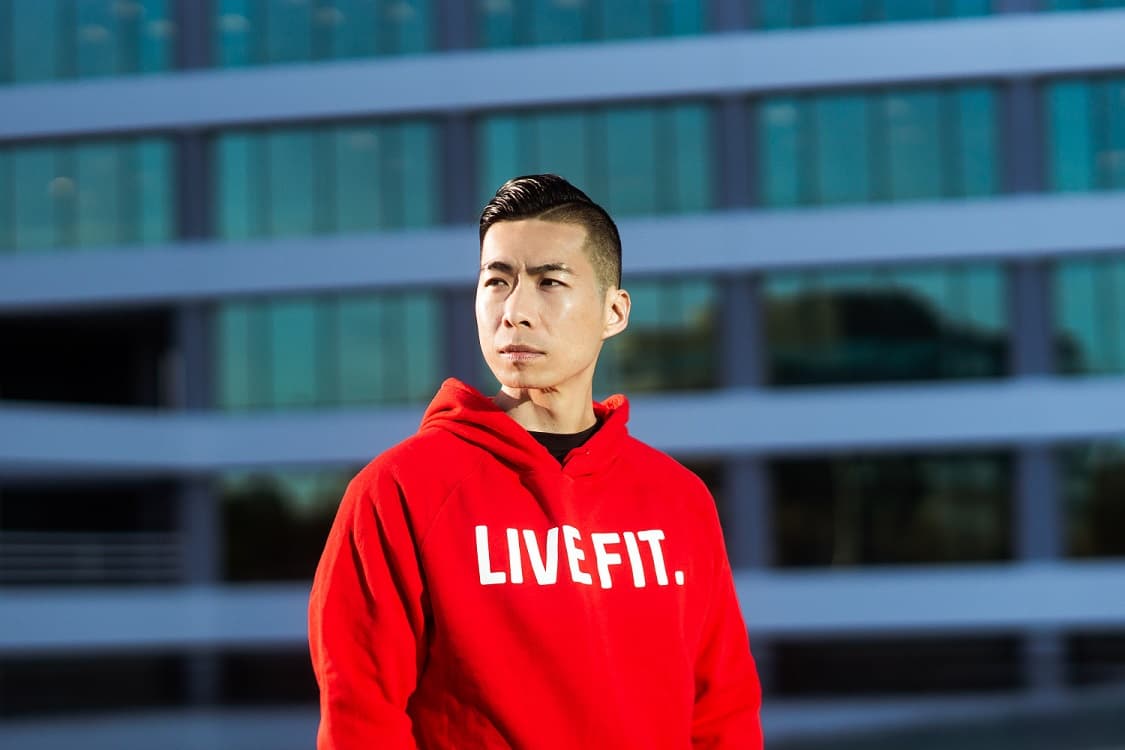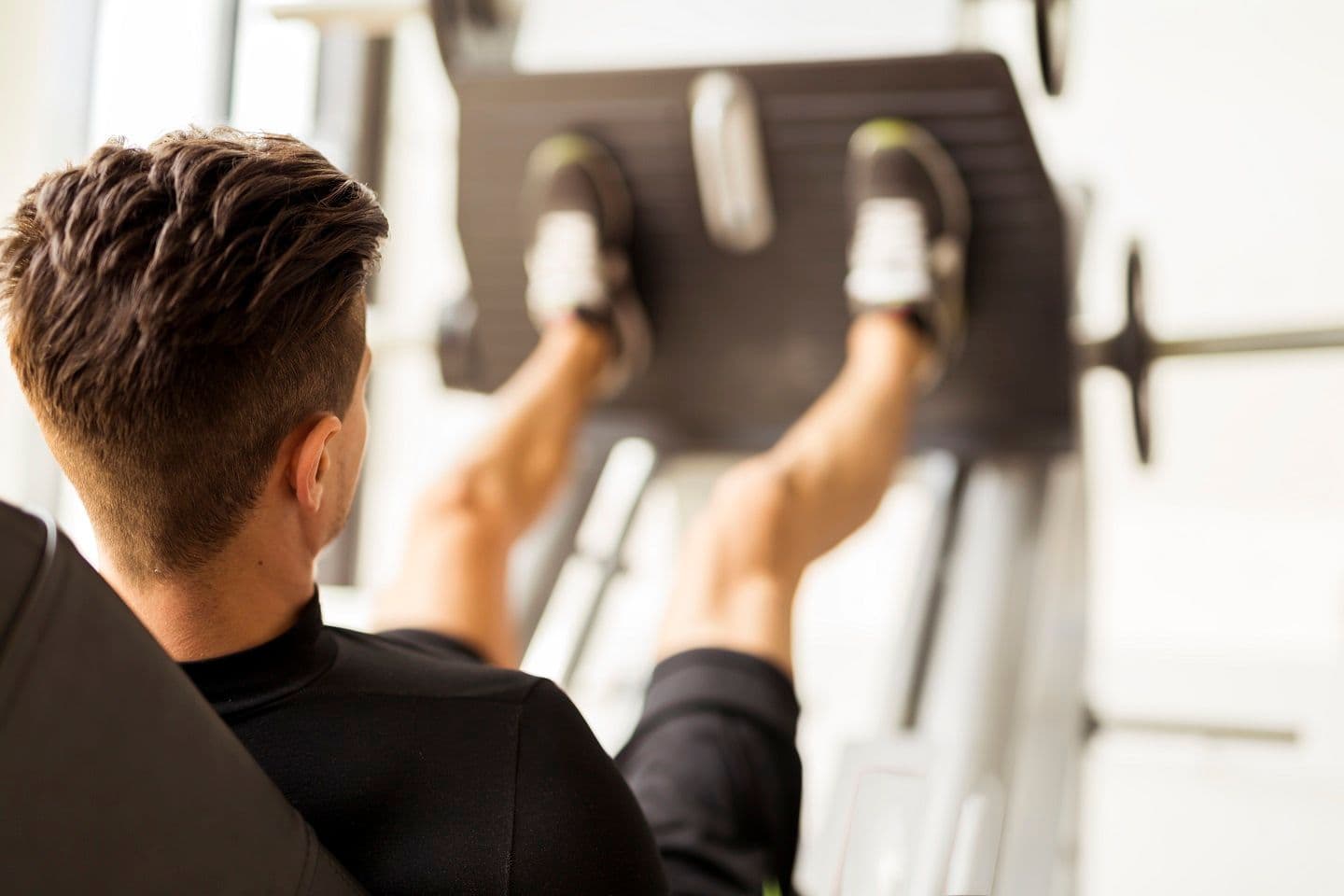5 Solutions to Getting Stronger Legs
IntroductionThe Foundation of Strength: Unlocking the Power in Your Legs
Picture this: you're on a hike, traversing rugged terrain, feeling the burn in your thighs as you conquer steep inclines. Or perhaps you're at the gym, effortlessly lifting weights and performing squats that leave others in awe. Strong legs are not only aesthetically pleasing but also crucial for optimal fitness and daily activities. They provide the stability, power, and endurance needed to excel in various physical endeavors. Leg Strength - A Gateway to Enhanced Overall FitnessWhen we talk about overall fitness, it's difficult to overstate the importance of strong legs. They serve as the foundation upon which our bodies rely for movement and stability. From walking and running to jumping and lifting heavy objects, our legs propel us forward with strength and confidence. Climbing Mountains (Both Literal and Figurative)Imagine yourself hiking up a mountain—each step requiring substantial effort as your legs bear your weight against gravity's relentless pull. This scenario mirrors life's challenges where we encounter metaphorical mountains that test our resilience. By strengthening our legs physically, we also fortify ourselves mentally and emotionally to overcome obstacles that may seem insurmountable. The Everyday Legacies We CreateStrong legs enable us to actively participate in our lives without limitations. Whether it's chasing after our kids at the park or comfortably navigating through crowded urban streets, maintaining leg strength allows us to enjoy life's precious moments with vigor and grace. A Fountain of Youth - Mobility & IndependenceAs we age gracefully—as we all aspire to—we often associate mobility with independence. Strong legs play a pivotal role in maintaining our ability to perform daily tasks, such as climbing stairs or carrying groceries. By investing in leg strength, we invest in our future selves, ensuring that we can lead fulfilling lives with autonomy and self-sufficiency. Now that we have explored the significance of strong legs for overall fitness and daily activities, let's dive into five effective solutions that will help you unlock the true potential of your lower limbs.
Solution 1: Resistance Training
When it comes to building stronger legs, incorporating resistance training into your workout routine is crucial. Not only does resistance training help enhance muscle strength and size, but it also improves bone density and joint stability. The benefits of resistance training for leg strength are immense, making it an essential component of any leg-focused fitness program.
Benefits of resistance training for leg strength
Resistance training stimulates the muscles in your legs to adapt and grow stronger over time. By challenging your muscles with external resistance, such as weights or resistance bands, you create microscopic damage within the muscle fibers. As a result, when these fibers repair themselves, they become thicker and stronger, leading to increased leg strength. Moreover, regular resistance training for your legs helps improve muscular endurance. This means that not only will you gain more strength in your legs, but you'll also be able to sustain that strength for longer periods without fatigue. This is particularly beneficial for activities like running or hiking where endurance plays a vital role.
Different types of resistance exercises targeting legs
There are various effective exercises that specifically target the leg muscles. One of the most popular and powerful exercises is the squat. Squats primarily work the quadriceps (front thigh muscles), hamstrings (back thigh muscles), glutes (buttocks), and calves. To perform squats correctly, stand with your feet shoulder-width apart, keep your back straight, lower yourself as if sitting back onto an imaginary chair while keeping your knees aligned with your toes. Lunges are another great exercise to strengthen your legs while also improving balance and stability. There are numerous lunge variations to try – forward lunges, reverse lunges, walking lunges – each targeting slightly different areas of the leg muscles. For example, forward lunges primarily engage your quads and glutes, while reverse lunges emphasize the hamstrings and glutes. Deadlifts are a compound exercise that engages multiple muscle groups, including the legs. While deadlifts are known for their benefits to the back and core, they also work wonders for leg strength. To perform deadlifts correctly, stand with your feet shoulder-width apart, bend at the hips while keeping your back straight, grip the barbell with an overhand grip, then lift the weight by extending your hips and knees. Adding these exercises to your leg workout routine will help you target all major leg muscles effectively. Remember to start with lighter weights or bodyweight variations if you're new to resistance training. Gradually increase the intensity as you get stronger and more comfortable with the exercises.
Solution 2: Plyometric Exercises
Exploration of Plyometrics and their Impact on Leg Strength
Plyometric exercises, also known as jump training, are a fantastic way to build leg strength and improve overall power. These exercises involve quick, explosive movements that engage the muscles and joints in a unique way. The beauty of plyometrics lies in their ability to generate maximum force in minimal time, resulting in increased leg power. When you perform plyometric exercises, the muscles undergo eccentric loading during the landing phase followed by an immediate concentric contraction during the jump or explosive movement. This rapid change from lengthening to shortening muscle fibers leads to improved muscle force production and enhances your ability to generate power from your legs.
Jumping Exercises to Enhance Leg Power and Explosiveness
Jumping exercises are at the heart of plyometric training. These movements engage multiple muscle groups simultaneously and promote coordination between them. One popular jumping exercise is the box jump. To perform this exercise correctly, stand facing a sturdy box or platform with your feet shoulder-width apart. Bend your knees slightly, then explode upwards using both your legs and arms for momentum. Land softly on top of the box with your knees slightly bent again before stepping down carefully. Another effective jumping exercise is the jump squat – an explosive variation of traditional squats. Begin by standing with feet hip-width apart. Descend into a squat position as you would normally but instead of returning to a standing position immediately, propel yourself off the ground explosively using your leg muscles while extending both arms upwards for balance. Land softly back into a deep squat position before repeating.
Box Jumps: Technique, Safety Tips, and Progression Levels
Proper technique is crucial when performing box jumps to avoid injury and maximize effectiveness. Start with a lower box height if you're a beginner, gradually increasing the height as you gain strength and confidence. Aim to land with your knees slightly bent to absorb the impact, ensuring a soft landing that minimizes stress on your joints. Safety should always be a priority in plyometric training. Ensure that the box is stable and secure before attempting jumps. If you're performing box jumps for the first time, consider having a spotter to provide guidance and ensure your form is correct. Don't rush into high-intensity box jumps right away; progression is key. Begin by practicing with lower boxes or even using a stable step platform until you feel comfortable and confident in your ability to execute the exercise safely. Gradually increase the height of the box as you improve your leg power and stability.
Jump Squats: How They Improve Leg Muscle Activation
Jump squats are an excellent way to activate multiple leg muscles simultaneously while also enhancing explosive power. This exercise targets your quadriceps, hamstrings, glutes, calves, and even engages your core for stability. As you explosively jump off the ground during a jump squat, your muscles contract forcefully to generate upward propulsion. This movement activates both slow-twitch and fast-twitch muscle fibers in your legs due to their rapid contraction requirement. By consistently incorporating jump squats into your workout routine, you'll notice improved leg strength, increased power output in various activities like running or jumping, and enhanced overall athletic performance. Plyometric exercises offer fantastic solutions for strengthening legs through explosive movements that engage multiple muscle groups simultaneously. Jumping exercises such as box jumps and jump squats help enhance leg power by maximizing force production in minimal time. Remember to focus on proper technique when performing these movements while also prioritizing safety and gradual progression to avoid unnecessary injuries. By incorporating plyometrics into your fitness regimen regularly, you'll witness significant improvements in leg strength, explosive power, coordination between muscle groups – ultimately leading to better overall athletic performance.
The Role of Cardio in Strengthening Legs
When it comes to building strong legs, cardiovascular activities play a crucial role. While most people associate cardio with heart health and weight loss, it also has immense benefits for leg strength. Engaging in regular cardiovascular exercises not only improves endurance but also helps to increase blood flow and oxygen supply to the muscles. Cardio workouts involve repetitive movements that require the legs to work continuously over an extended period. This constant engagement of the leg muscles helps to build strength, endurance, and resilience. Additionally, cardio exercises promote fat burning and weight management, reducing the load on your legs during various activities.
Low-Impact Exercises that Promote Leg Endurance without Straining Joints
If you're concerned about joint strain or have specific conditions like arthritis or previous injuries, low-impact exercises are a great option for strengthening your legs without causing unnecessary stress. These exercises help protect your joints while still providing excellent cardiovascular benefits. Walking or Brisk Walking: Walking is a simple yet effective low-impact exercise that can be easily incorporated into your daily routine. It engages all major leg muscles without putting excessive stress on your joints. Gradually increase your walking pace by including intervals of brisk walking to challenge your leg muscles further. Cycling or Using a Stationary Bike: Cycling is another fantastic low-impact option that targets the lower body muscles while minimizing joint impact. Whether you prefer outdoor cycling or using a stationary bike indoors, this exercise strengthens not only the quadriceps but also the hamstrings and calves.
A Closer Look at Walking or Brisk Walking
Walking may seem like an ordinary activity, but it has remarkable benefits for strengthening your legs when done correctly and consistently. Start with a warm-up by walking at a moderate pace for a few minutes to get your muscles ready for the workout. As you progress, gradually increase your pace, focusing on maintaining proper form. Remember to land on your heel first and roll through to your toes with each step. Engage your core muscles and swing your arms naturally to enhance the overall effectiveness of the exercise. If you're up for more challenge, consider adding inclines or walking on uneven terrain to further engage different leg muscles.
Cycling or Using a Stationary Bike: The Power of Pedaling
Cycling provides an excellent opportunity to strengthen both your leg muscles and cardiovascular system, and it's suitable for all fitness levels. Whether you choose outdoor biking or using a stationary bike at home or in the gym, pedaling offers numerous benefits. Ensure that your bike seat is adjusted correctly so that when you pedal, there is a slight bend in your knee when the pedal is at its lowest point. This avoids strain and promotes efficient muscle engagement. Gradually increase resistance as you build strength, challenging yourself without causing unnecessary strain on the joints. Incorporating cardiovascular activities into your fitness routine not only improves heart health but also contributes significantly to building stronger legs. Low-impact exercises such as walking or brisk walking provide an accessible option for those looking to improve leg endurance without straining their joints. Cycling, whether outdoors or using a stationary bike, offers an effective way to target various leg muscles while minimizing joint impact. Remember consistency is key; strive for regular cardio sessions alongside other solutions discussed earlier for remarkable leg strength gains!
Solution 4: Flexibility Training
Importance of flexibility for strong legs
Having strong legs is not just about raw power and muscle mass; it also involves having flexibility in your lower body. Flexibility plays a crucial role in preventing injuries and improving overall performance. When your leg muscles are flexible, they can move through a full range of motion, allowing you to perform exercises with proper form and efficiency. Additionally, flexible muscles are less prone to strain or tears during physical activities, making them essential for maintaining long-term leg health.
Stretching exercises to improve leg flexibility
To enhance the flexibility of your legs, incorporating stretching exercises into your fitness routine is key. These exercises specifically target the major leg muscles and help improve their range of motion. Two types of stretches that you should focus on are static stretches and dynamic stretches.
Static stretches for major leg muscles
Static stretching involves holding a stretch position without any movement for a certain period. This type of stretching helps lengthen the muscles and increase overall flexibility. Some effective static stretches for major leg muscles include: 1. Hamstring Stretch: Sit on the floor with one leg extended straight in front of you while bending the other knee. Reach forward toward your toes, keeping your back straight. 2. Quadriceps Stretch: Stand upright and grab one foot behind you by bending its knee towards your buttocks while keeping your knees close together. 3. Calf Stretch: Stand facing a wall with one foot forward and slightly bent while extending the other leg behind you. Lean towards the wall until you feel a stretch in your calf muscle.
Dynamic stretches before workouts
Unlike static stretching, dynamic stretching involves continuous controlled movements that mimic exercise motions to warm up the body before workouts or activities requiring explosive movements from the legs. These movements help increase blood flow, boost muscle temperature, and prepare the body for more intense physical activity. Some effective dynamic stretches for the legs include: 1. Walking Lunges: Take a step forward with your right leg and lower your body into a lunge position. Push off with your back foot and bring it forward to perform a lunge with the opposite leg. 2. Leg Swings: Stand next to a wall or support, swing one leg forward and backward in a controlled manner while keeping your body upright. 3. High Knees: Stand tall and march in place while lifting each knee as high as possible toward your chest. Remember to perform both static stretches and dynamic stretches regularly to improve leg flexibility over time. Incorporating these exercises into your warm-up routine will help enhance performance, prevent injuries, and contribute to stronger legs in the long run. Next up: Solution 5 - Nutrition & Supplementation
Solution 5: Nutrition & Supplementation
Impact of Nutrition on Muscle Growth and Recovery
When it comes to building strong legs, nutrition plays a vital role in fueling your muscles and aiding in their recovery. To achieve optimal muscle growth, it's important to consume a well-balanced diet that provides the necessary nutrients. Proteins, carbohydrates, and healthy fats are all essential components of a muscle-building diet. Protein is especially crucial for muscle repair and growth. It provides the building blocks for building lean muscle tissue. Aim to include quality protein sources such as lean meats, poultry, fish, eggs, dairy products, legumes, and plant-based proteins like tofu or tempeh in your daily meals. Additionally, carbohydrates are essential for providing energy during intense workouts. Complex carbs like whole grains, fruits, vegetables, and legumes should be part of your meal plan. They provide sustained energy while also replenishing glycogen stores in your muscles. Don't forget about healthy fats! Fats are necessary for various bodily functions and can support joint health. Foods rich in healthy fats include avocados, nuts and seeds (such as almonds or chia seeds), olive oil, fatty fish (like salmon or sardines), and nut butters.
Key Nutrients That Support Leg Strength
Apart from macronutrients like protein, carbs,and fat there are specific micronutrients that play a vital role in supporting leg strength. Let's look at some key nutrients: - Calcium: Calcium is integral for bone health as well as muscle function. Dairy products such as milk, cheese,and yogurt are excellent sources of calcium. - Vitamin D: Vitamin D works synergistically with calcium to maintain bone density and strength. It can be obtained through sun exposure or from foods like fatty fish, fortified dairy products, and egg yolks. - Magnesium: This mineral is involved in muscle contractions and energy production. Legumes, nuts, seeds, whole grains, and leafy green vegetables are all good sources of magnesium. - Iron: Iron is essential for oxygen transport throughout the body. Incorporate iron-rich foods like lean red meat, poultry, seafood, beans,and dark leafy greens into your diet. - Vitamin C: Vitamin C plays a role in collagen synthesis. It can be found in citrus fruits (e.g., oranges, grapefruits), berries, kiwi,and bell peppers. Including a diverse range of nutrient-dense foods will help ensure you're getting these vital nutrients to support leg strength.
Protein-rich Foods for Muscle Repair
Protein is the building block for muscle repair and growth. Including ample protein in your diet is crucial to strengthen your legs effectively. Here are some fantastic sources of protein: - Lean meats: Skinless chicken breast, turkey breast,and lean cuts of beef or pork are excellent sources of high-quality protein. - Fish: Fatty fish like salmon,tuna,and trout not only provide protein but also omega-3 fatty acids that aid in reducing inflammation and promoting overall health. - Eggs: Eggs contain all essential amino acids needed for muscle repair. They are easily accessible, versatile, and packed with protein. - Dairy products: Greek yogurt,Cottage cheese,milk,and whey protein powder are all rich sources of protein that can be incorporated into various meals or enjoyed as snacks. Adding these protein-rich foods into your daily meals will provide the necessary amino acids for muscle repair and growth, ultimately strengthening your legs.
Vitamins and Minerals Essential for Bone Health
Strong bones are integral to supporting leg strength. Several vitamins and minerals contribute to bone health. Here are some key ones to focus on: - Calcium: As mentioned earlier, calcium is crucial for bone strength. Incorporate dairy products like milk, cheese,and yogurt into your diet or consider non-dairy sources like leafy greens, tofu, or fortified plant-based milk alternatives. - Vitamin D: Vitamin D is necessary for calcium absorption. Along with sun exposure, include vitamin D-rich foods such as fatty fish (salmon,mackerel), egg yolks, or fortified foods in your diet. - Vitamin K: This vitamin helps regulate calcium deposition in bones. Leafy green vegetables like kale, spinach,and broccoli are excellent sources of vitamin K. - Magnesium: Apart from its muscle-related benefits, magnesium also contributes to bone health. Include magnesium-rich foods such as nuts (almonds,cashews),seeds (pumpkin seeds,sunflower seeds), and legumes in your meals. By ensuring you consume an adequate amount of these vitamins and minerals regularly, you can support bone health and enhance the overall strength of your legs.
Conclusion
Recap of the five solutions to getting stronger legs
Throughout this article, we have explored five effective solutions to help you achieve those strong and powerful legs you desire. Let's recap these solutions briefly. Firstly, resistance training is crucial for building leg strength. Exercises like squats, lunges, and deadlifts target the major leg muscles and promote muscle growth. Adding variations to these exercises keeps your workouts interesting and prevents plateaus. Secondly, plyometric exercises are fantastic for enhancing leg power and explosiveness. Activities like box jumps and jump squats engage your muscles in a dynamic way, improving not only strength but also agility and coordination. Cardiovascular activities come next on our list. Engaging in low-impact exercises such as walking or cycling helps improve leg endurance without straining your joints. These activities keep your heart healthy while gradually building up leg strength over time. Flexibility training is another important aspect of developing strong legs. Incorporating static stretches for major leg muscles into your routine improves flexibility and reduces the risk of injury. Dynamic stretches before workouts warm up your muscles and prepare them for the demands of exercise. Don't forget about nutrition and supplementation! A well-balanced diet rich in protein will support muscle repair after intense workouts. Key nutrients like vitamins and minerals also play a vital role in maintaining bone health, which is essential for strong legs.
Encouragement
Now that you have a robust set of tools at your disposal, it's time to get out there and put them into action! Remember, progress takes time, so don't get discouraged if you don't see immediate results. Consistency is key – stick to your workout routine diligently while incorporating these five solutions. Celebrate every small victory along the way as you notice improvements in strength, endurance, or even how your clothes fit. Be patient with yourself and your body, as building strength takes time and effort. Surround yourself with supportive friends or join a fitness community to stay motivated. Believe in yourself and your abilities. With determination, discipline, and the knowledge gained from this article, you are well on your way to achieving those strong legs you've been dreaming of. So go ahead, embrace the challenge, and remember that the journey itself is a reward. Get ready to feel empowered as you conquer each workout session and witness the incredible transformation happening within you. Stronger legs await you – now it's time to take that first step towards a fitter, more capable version of yourself. You've got this!
About The Author


Get your macronutrients breakdown
Fill out the form below to get a preview of your recommended daily calorie and macronutrient breakdown.

Stubborn Subcutaneous Fat Loss | 3 Tips
Stubborn Subcutaneous Fat Loss | 3 Tips Introduction When it comes to shedding those stubborn pounds, one particular type of fat seems to be particu...

Keeping A Fitness Journal to Find Your Perfect Routine
Keeping A Fitness Journal to Find Your Perfect Routine Introduction Have you ever felt like you're wandering aimlessly in the world of fitness, unsu...



